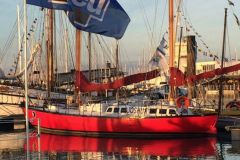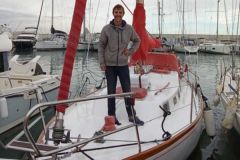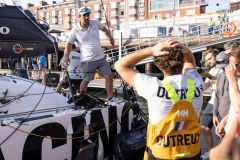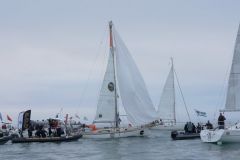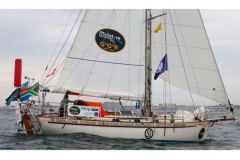24 hours after his triumphant arrival on the Golden Globe Race 2018, Jean-Luc Van den Heede, the 73-year-old sailor, welcomes us aboard his boat. This Rustler 36, a 1980 sailing boat with a long keel, which has just sailed around the world in 211 days, is surprisingly fresh. VDH presents the changes made and describes his life on board during this round the world trip.
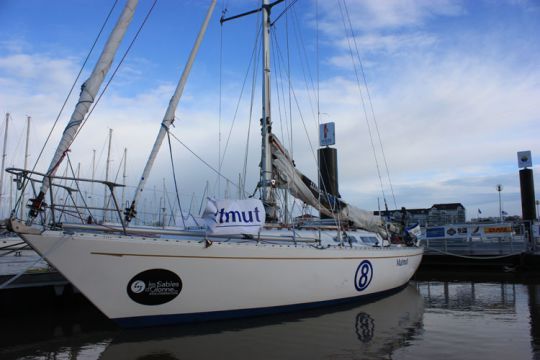
Can you tell us why you chose a Rustler 36 and why this one in particular?
I looked at the list of authorized boats and hesitated between the Gaïa 36 - like Tapio Lehtinen, who is currently the last - and this one. It's a narrower boat, from my point of view: faster, but the only problem is that being narrower, it's less bulky and carries less weight. It forces you to keep an extremely light boat. But since we are leaving for 7-8 months - at the time we didn't really know how long it would take - we have to be able to bring food and equipment, it's a lot of weight and the Gaïa wouldn't have supported the weight. But I hesitated for a long time. Even after I bought this one, I thought maybe I had done something stupid that I should have taken a Gaia. On paper it is faster, but it is a boat that must be at its weight and can not support more.
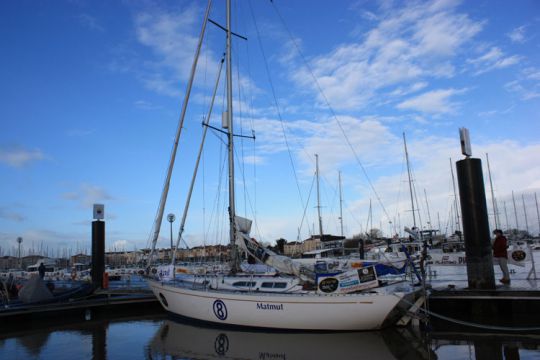
In addition, 120 Ruslter models have been built, some of which are available on the second-hand market. I went to all of them and chose this one. First of all, because it was the owner who introduced me to him, not a dealer. I found the owner - English of course - very meticulous. The boat was in good condition, I didn't do anything in varnish. There were a number of things I didn't want, like wheel steering. I had a teak deck that I cleared, it's useless weight.
These are boats that sell for a fortune. I bought mine for 75,000 euros supposedly because it's well built. There are things like that that keep a lot of value: the Swans for example.
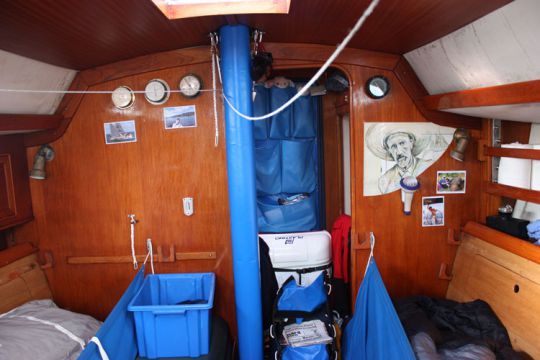
Have you made any modifications to put it in your hand and prepare it for this race?
There is one watertight bulkhead[at the mast foot - editor's note] that is not mandatory and another at the front that is mandatory. In the cockpit I made a waterproof trunk. It was also mandatory to reinforce the portholes when they were larger than a certain surface area. I cut them in half with a bar.
In short, I did a lot of work on it: changed the rigging, the winches... for ergonomics and safety. I was the only Rustler with a shortened 1.5m mast. After a lot of testing on the boat, I noticed that we were reefing too quickly. We carry 1.50m of weight up there when we have to take a reef. This weight in the South Seas is useless. And I did the right thing because when I capsized, with a standard mast I am convinced that it would no longer be there - even if we can't prove it. With 1.50m less, the shrouds work better, with more angle, it is a "virtuous circle"
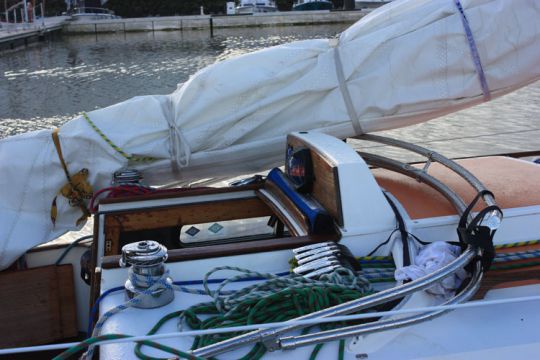
If you had to do it all over again, would you do the same preparation again?
The waterproofness of the boat is catastrophic! The portholes are leaking, the chainplates are leaking, the mast foot is leaking... If I had to do this race again with this boat, I would work a lot on the waterproofing. But I'd leave with that boat! - with a new mast.
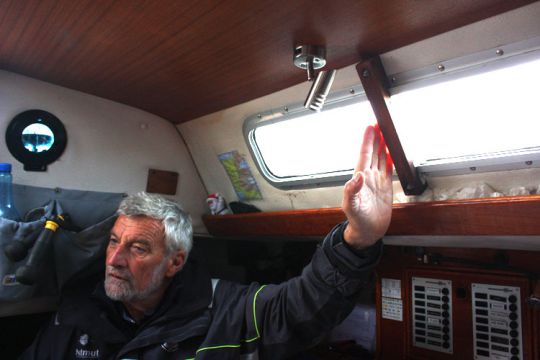
How did you prepare yourself on this boat?
I bought it three years before the start of the race. We brought it back in July, I sailed with it in the winter. We started it all summer and I re-brewed it all winter. Obviously what interested me was not to sail by force 2 on a sunny day, it would have been of no interest. So I was sailing in winter. It was rebuilt a second time the following summer. And the third summer: it was the start, we put it back one last time in final work and I took the start.
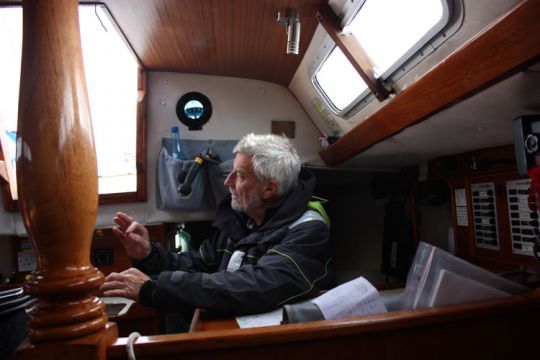
Have you become attached to this boat more than any other?
That's my 19 he rear concave tends to propel the hull forward, thus reducing overall drag boat. So yes, I'm getting attached to it because we've had a great experience, but I don't see myself going on a cruise with this boat. If I had to buy a boat, it would be a modern cruising race, with a modern keel, a rudder that is not very hard. With these boats whose rudder is glued to the keel and not compensated at all, it's very hard at the helm.
It's like an Englishman buying a "Morgan" car that still has a wooden side rail. It's an expensive car, there are amateurs for that. It already takes you half an hour to leave, to be careful with the door, the thing, etc. This is not a car you take the keys from and drive away. It's not my thing.
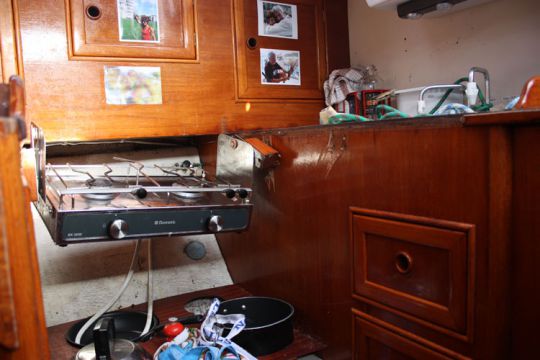
What went wrong on the boat?
The mast, because in the end it's still there. But almost everything held. Except for the stove I came across on the last day. I've done a lot of small preventive repairs, but I didn't break anything.

How is a typical day on this boat?
It always feels like we haven't done anything. At night, it gets dark and you say to yourself, "What the hell have I done today?" There is this kind of routine that is taking hold. You must constantly monitor the boat's progress, fill in your logbook and maintain an esteem with your compass and log. It's not a GPS you push a button on. From time to time you have to steer, change the sail... In the morning, I start by going for a walk on deck to see if everything is fine, if there has been no raking in the night, if the sails are fine. If I have to intervene right away, I do, if it's not serious, I'll have breakfast and I'll see it in the morning.
You have to make your estimates to know when to make your position. For example at 03:00 UTC depending on the sun. It takes 1h30 before to do the longitude, then at the exact time for the latitude, it takes 1h30 after to do the other side of the longitude. There's already three hours passed in which you're stuck. In between, I eat and take a nap sometimes.
The afternoon arrives. If I have time, I read books, otherwise I clean or tidy up - even if it doesn't seem like it, but I do clean up from time to time.
Today, there's the medicine bag I didn't move. Someone moved it yesterday. I never opened the pharmacy. I broke my face from the chart table on the stove, I could have hurt myself. I was also unbalanced and had some bruises. I hit the coast... But nothing that didn't require medication.
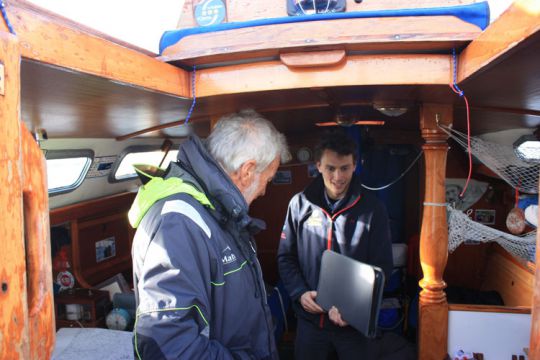
Can you tell us about a good memory you had on board during these 7 months?
There are several of them, but my most memorable memory of this race is the passage of Cape Horn. I've done it 10 times, but the difference compared to all the other times is that in 2014 I took a cruise to Cape Horn, landed on the island and went to see the guard. We passed the 1st ERYD - Emanuele Rossi Yacht Design - is an Italian naval architecture firm that also builds its own daysailers under the brand name ERYD Yachts. In 2006, the Eryd 30 - a very elegant 9m sailboat with sleek lines - was launched before being joined in 2010 by the Eryd Open - an innovative 8.70m design. january with him. The fact that I went to see the island, to visit the monument on it: when I went there this time, it was different from the other passages. Usually I was just passing through, this time I knew and recognized. I called the guard, we talked in Spanish. He took pictures, it was nice.
It's just a rock I'm passing, it's a rock I know.
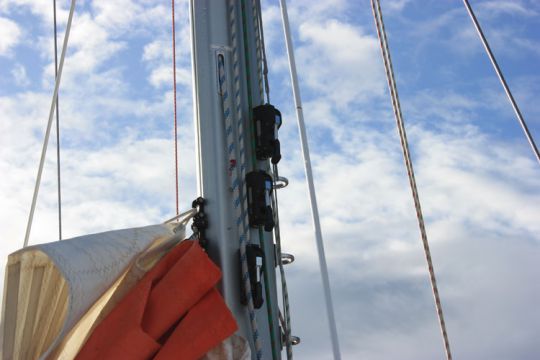
And on the other hand, what was the worst memory?
The undeniable capsizing.
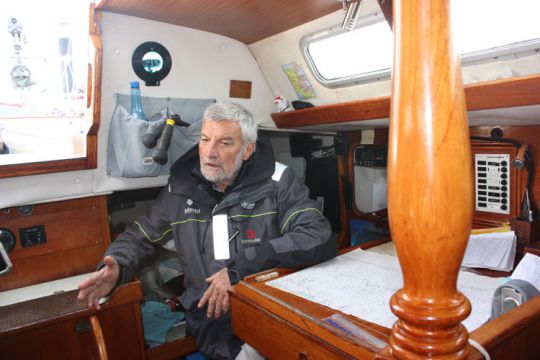
How is your living area organized?
I sleep in the bunks. Usually upwind, except when there is a risk of capsizing. In the middle are the two spis. When I have to sleep in a raincoat, I have a down - which is soaked - and I sleep on the floor. But 99% of the time I sleep in the bunk in the wind.
In front of the watertight bulkhead, there are other sails.
I had planned 240 days of food - freeze-dried and preserved - that I store under the bunks, behind the seat backs. Under the cockpit I store the clothes. There's a lot of storage space. It's a fairly wide boat that allows you not to have any storage problems as I thought.
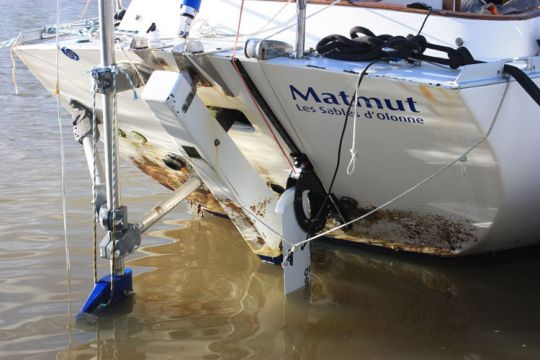
What are the differences in the way of life compared to your experiences in IMOCA?
They are very different boats, but in the way of life and racing it's not very different. Except that there were not 4-5 boats fighting there. I was alone in the south with a considerable lead of 2000 miles before capsizing. When you sail 2000 miles ahead, you don't see things the same way.
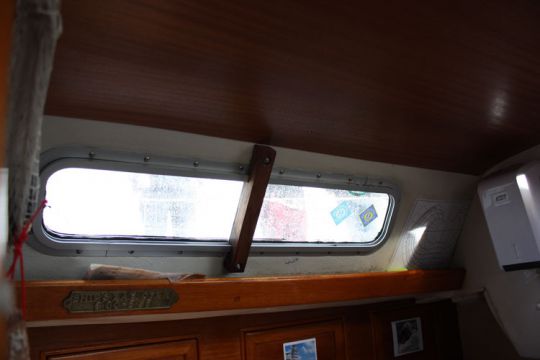
How is the return to shore after 7 months at sea?
It's not very different from other world tours. When you leave, you know what to expect. As well as to find people. You know you're coming in five days, you're preparing for it and you're happy to have everyone back.





